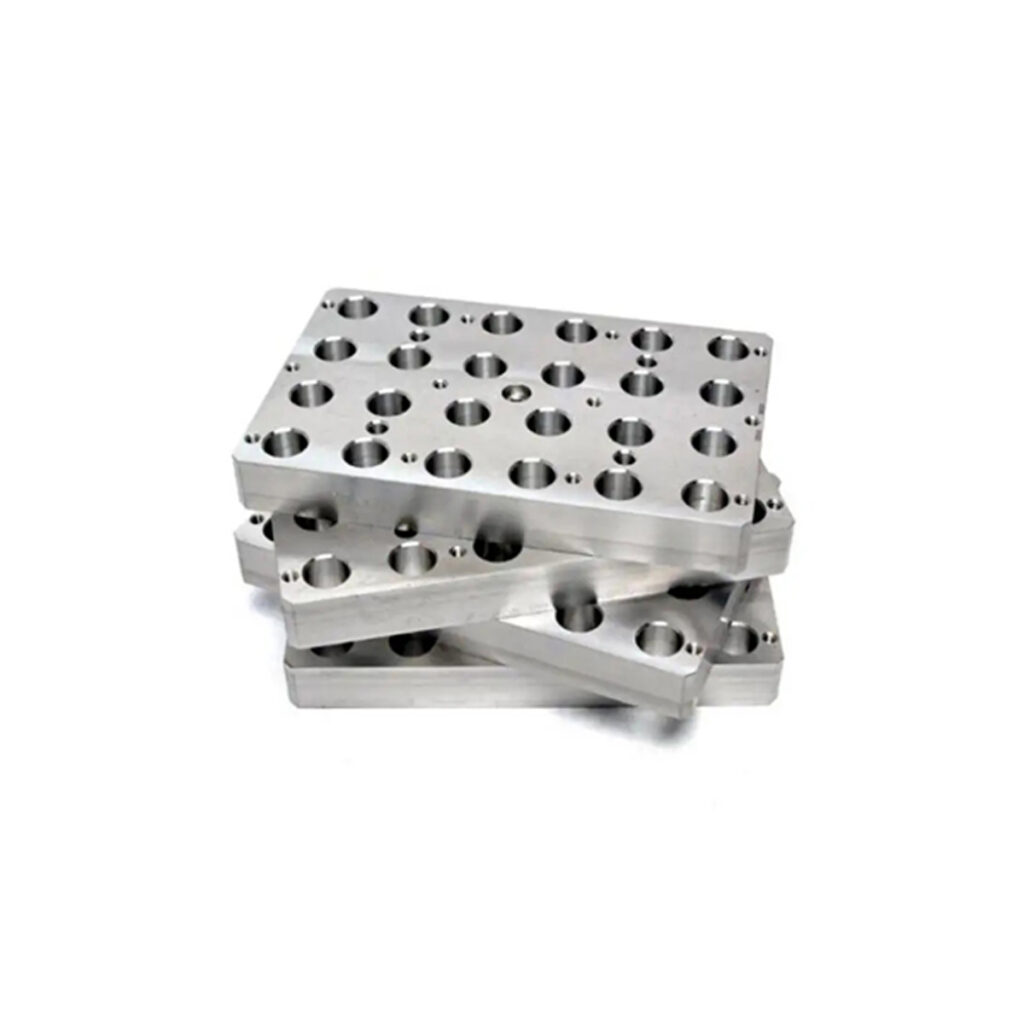In the precise world of Computer Numerical Control (CNC) machining, two fundamental processes form the backbone of modern manufacturing: CNC Turning and CNC Milling. While both are subtractive manufacturing methods that remove material from a solid block (or bar) to create a custom part, they operate on fundamentally different principles and are suited for distinct geometries and applications.
For engineers, designers, and procurement specialists, understanding the difference between turning and milling is not just academic—it’s crucial for designing for manufacturability (DFM), optimizing part cost, and selecting the right process for the job.
This in-depth guide will break down these two key CNC processes, explore their unique capabilities, and provide a clear framework for when to use each.
Part 1: Understanding the Core Concepts
What is CNC Turning?
The Analogy: Think of a potter’s wheel. The clay (workpiece) spins at a high speed, and the potter’s tools (cutting tool) shape it by removing material from the outside.
The Process:
In CNC turning, the workpiece is securely clamped and rotated at high RPMs by a machine called a lathe or CNC turning center. A stationary, single-point cutting tool is then precisely moved along two linear axes (X and Z) to remove material, creating a cylindrical or conical shape.
- Workpiece Movement: Rotates.
- Cutting Tool Movement: Moves in a linear path.
- Primary Machine: CNC Lathe, Swiss-type Lathe.
- Typical Raw Material Form: Round bar stock, tubes.
Key Characteristics of Turned Parts:
- Cylindrical Symmetry: Parts are often, though not always, rotationally symmetric.
- Common Features: External and internal diameters, grooves, tapers, threads (internal and external), faced surfaces.
- Part Examples: Shafts, bolts, screws, pulleys, bushings, nozzles.
Advanced Turning: The Swiss-Type Lathe
For small, complex, and slender parts, Swiss-type lathes are used. In these machines, the guide bushing supports the bar stock very close to the cutting action, preventing deflection. The tools can move in multiple axes, and the headstock can move in the Z-axis, allowing for extremely precise and complex parts in a single setup.
What is CNC Milling?
The Analogy: Think of a sculptor carving a statue from a block of marble. The block (workpiece) is stationary, and the sculptor uses various chisels (cutting tools) to remove material from different angles.
The Process:
In CNC milling, the workpiece is held stationary in a vise or fixture on a machine bed. The material is then removed by a multi-point rotating cutting tool (called an end mill or cutter) that moves along multiple axes (typically 3 to 5).
- Workpiece Movement: Stationary.
- Cutting Tool Movement: Rotates at high speed and moves along multiple linear and/or rotational axes.
- Primary Machine: CNC Machining Center, Milling Machine.
- Typical Raw Material Form: Rectangular or cubic blocks, plates.
Key Characteristics of Milled Parts:
- Complex, Non-Symmetrical Shapes: Milling is ideal for parts without rotational symmetry.
- Common Features: Flat surfaces, pockets, slots, complex contours, holes (drilled and tapped), engraved text, 3D surfaces.
- Part Examples: Engine blocks, brackets, molds, dies, enclosures, gears.
Advanced Milling: Multi-Axis Machining
- 3-Axis Milling: The most common. The tool moves in X, Y, and Z linear axes. The workpiece must be repositioned manually to access different sides, which can introduce small errors.
- 5-Axis Milling: A premium process where the tool can move in three linear axes (X, Y, Z) and the workpiece can be rotated on two additional axes (A and B). This allows the part to be approached from virtually any direction in a single setup, enabling the creation of incredibly complex geometries with high accuracy and superior surface finish.
Part 2: Head-to-Head Comparison – Turning vs. Milling
The table below provides a clear, side-by-side comparison of the two processes.
| Feature | CNC Turning | CNC Milling |
|---|---|---|
| Fundamental Principle | Rotating workpiece, stationary tool. | Stationary workpiece, rotating tool. |
| Primary Machine | CNC Lathe, Swiss-type Lathe. | CNC Machining Center (3-axis, 5-axis). |
| Axis of Movement | Typically 2 axes (X, Z). Live tooling can add milling capabilities. | 3-axis standard. 4-axis and 5-axis for complex parts. |
| Geometric Capability | Axially Symmetrical Parts: Cylinders, cones, discs. | Complex, Asymmetrical Parts: Prismatic shapes, flat surfaces, contours. |
| Typical Part Features | OD/ID diameters, threads, grooves, tapers, facing. | Pockets, slots, planes, complex 3D surfaces, engraved features. |
| Material Removal Rate (MRR) | Very high for cylindrical parts. | High, but generally lower than turning for similar volumes of cylindrical material. |
| Surface Finish | Excellent finish on cylindrical surfaces. | Excellent finish on flat and contoured surfaces. |
| Setup & Complexity | Generally faster and simpler setup for cylindrical parts. | Setup can be more complex, especially for multi-sided parts. |
| Cost-Effectiveness | Highly cost-effective for rotational parts. | Highly cost-effective for prismatic and complex parts. |
Part 3: When to Use Which Process? A Practical Decision Guide
Choosing between turning and milling boils down to one primary factor: the fundamental geometry of your part.
Choose CNC Turning when your part is…
- Cylindrical or Rotationally Symmetrical: If the part can be described by its diameter and length, turning is almost always the correct and most efficient choice. Examples include:
- Shafts and Axles: A drive shaft for a motor.
- Fasteners: Custom bolts, screws, and nuts.
- Fluid Components: Valves, connectors, and nozzles.
- Pins and Bushings: Any round, dowel-like component.
- Requiring High-Speed Production of Round Features: A lathe can create a perfect diameter, face the end, and cut a thread much faster than a milling machine can.
- Based on a “Disc” Geometry: Flanges, pulleys, and wheels are classic turned parts, even if they are short.
Key Advantage of Turning: For its intended geometries, turning offers a superior Material Removal Rate (MRR), meaning it can create the part faster and at a lower cost than milling.
Choose CNC Milling when your part is…
- Prismatic or Non-Symmetrical: If the part has features on multiple faces and lacks a central axis of symmetry, milling is the only option. Examples include:
- Brackets and Mounting Plates: An L-shaped bracket with mounting holes.
- Enclosures and Housings: An electronic case with precise cutouts for displays and ports.
- Molds and Dies: The complex, negative cavities used for injection molding or die-casting.
- Gears and Complex Mechanisms: Parts with intricate teeth and profiles.
- Requiring Complex Contours and 3D Surfaces: If the part has organic, sculpted shapes (like a prosthetic limb or a custom handle), 3-axis or 5-axis milling is required.
- Featuring Flat Surfaces, Pockets, and Slots: Milling is the definitive process for creating recessed areas, internal pockets, and through-slots.
Key Advantage of Milling: Unmatched geometric flexibility. It can produce shapes that are impossible to achieve with turning alone.
Part 4: The Power of Combination: Turning-Milling Compound Machines
In modern workshops, the line between turning and milling is often blurred by advanced Turning-Milling Compound Centers. These are essentially lathes equipped with live tooling.
- What is “Live Tooling”? These are powered rotating tools (like a milling cutter) that can be mounted on the turret of a lathe. While the part is spinning, it can be turned; the spindle then stops, and the live tool performs milling operations (e.g., drilling a cross-hole, milling a flat, or cutting a slot).
- When is it Used? This is the ideal solution for a part that is fundamentally cylindrical but requires off-axis features.
- Example: A cylindrical shaft that needs a drilled hole through its side and a flat surface milled for a set screw. Instead of making it on two separate machines (a lathe and a mill), the entire part can be completed in a single setup on a turning-milling compound machine, drastically improving accuracy and reducing lead time.
Conclusion: Making the Right Choice for Your Project
Understanding the distinction between CNC turning and CNC milling is a fundamental step in successful product development and manufacturing.
- For the round parts, think Turning.
- For the blocky, complex parts, think Milling.
- For a round part with added features, think Compound Machining.
By aligning your part’s design with its most natural and efficient manufacturing process, you optimize for cost, speed, and quality. Early collaboration with your manufacturing partner is key. Sharing your 3D CAD models with them during the design phase allows their engineers to recommend the optimal process, suggest design tweaks for better manufacture ability, and provide the most accurate and competitive quotation.


